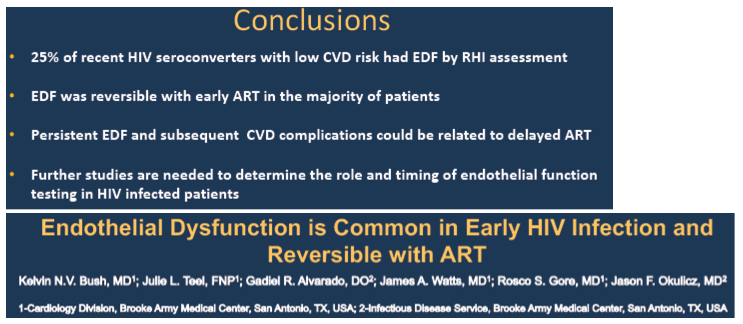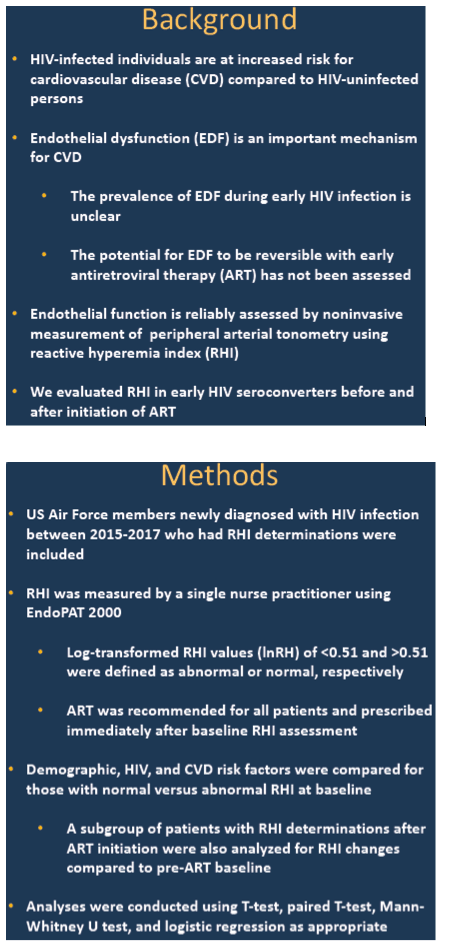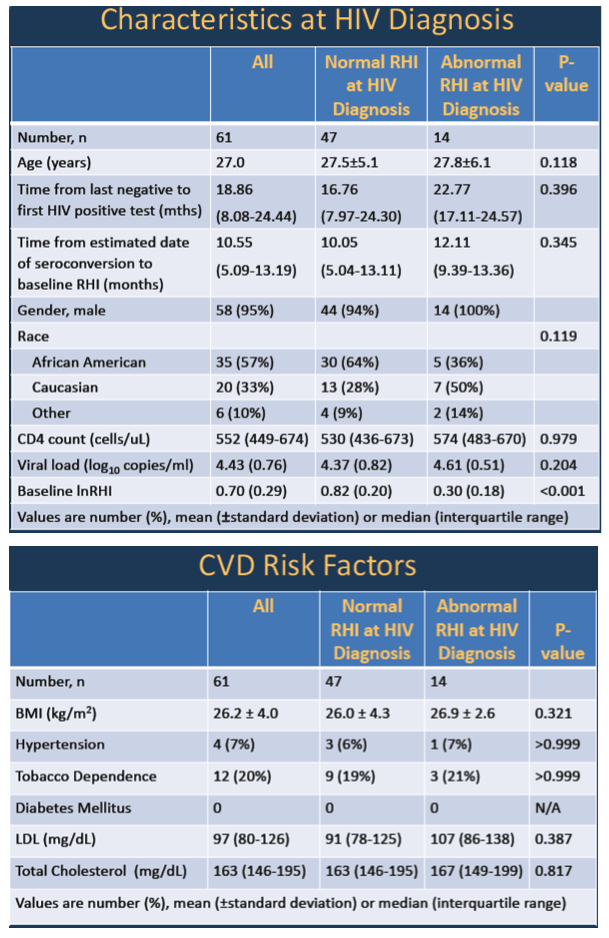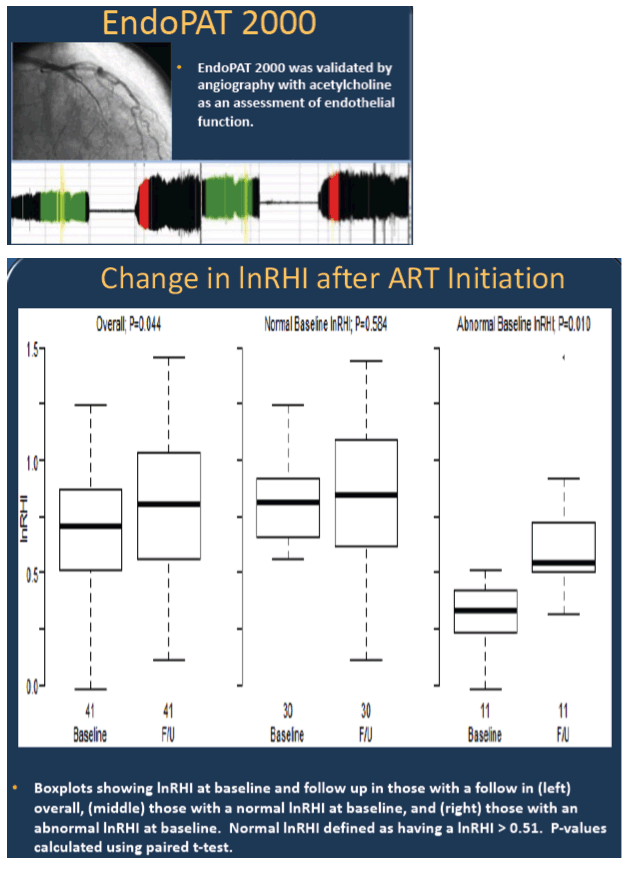 |
 |
 |
| |
High endothelial dysfunction rate with recent HIV in young adults with low cardiovascular risk
|
| |
| |
Conference on Retroviruses and Opportunistic Infections (CROI), March 4-7, 2019, Seattle
Mark Mascolini
Nearly 25% of young adults with recently diagnosed HIV infection had endothelial dysfunction, a cardiovascular disease mechanism, despite low cardiovascular risk [1,2]. Prompt antiretroviral therapy (ART) reversed endothelial dysfunction in most people [3 of 8 did not reverse it].
US military researchers who conducted this study noted that little is known about endothelial dysfunction prevalence during early HIV infection or about the impact of early ART on endothelial dysfunction. Because endothelial function can be reliably and noninvasively assessed by reactive hyperemia index (RHI), they evaluated RHI in people with early HIV infection before and after they started ART.
The study involved US Air Force members newly diagnosed with HIV in 2015-2017 who had RHI measured after diagnosis. The researchers defined abnormal RHI as a log-transformed reading below 0.51, while higher readings were normal. Clinicians recommended ART for all participants immediately after RHI.
Of the 61 participants, 14 (23%) had an abnormal RHI indicating endothelial dysfunction (baseline RHI 0.30 versus 0.82 in the normal RHI group, P < 0.001). People with abnormal RHI did not differ from the normal group in age (average 27.8 and 27.5, P = 0.118), time since last negative HIV test (18.9 months overall), time since estimated date of HIV seroconversion (10.55 months), or proportion of men (95%). Compared with the normal RHI group, the abnormal group included a nonsignificantly lower proportion of blacks (36% versus 64%) and a higher proportion of whites (50% versus 28%) (P = 0.119). Initial average CD4 count and viral load were similar in the two groups (552 and 27,000 copies).
Cardiovascular risk factors were rare and equivalent in the groups with abnormal and normal RHI, including body mass index (average 26.2 kg/m2 overall), LDL cholesterol (97 mg/dL overall) and proportions with hypertension (7%), tobacco dependence (20%), or diabetes (0%). Every additional 10 years of age was marginally associated with doubled odds of abnormal RHI (odds ratio 2.15, P = 0.089), whereas cardiovascular risk factors, demographics, and HIV disease factors did not predict abnormal RHI.
Researchers had repeat RHIs in 41 people, including 40 who started ART and had another RHI a median of 6.44 months later. Everyone began treatment with an integrase inhibitor regimen. One person declined ART. ART boosted RHI an average 0.33 (P = 0.021). Eight of 11 people (73%) with an initial abnormal RHI reached a normal RHI with ART. The one person who declined ART went from a normal to an abnormal RHI in 8.3 months (0.60 to 0.11).
The investigators concluded that endothelial dysfunction is common in young people with recent HIV infection and largely without classic cardiovascular risk factors. They proposed that "persistent endothelial dysfunction and subsequent cardiovascular disease complications could be related to delayed ART." They called for further studies to determine the role and timing of endothelial function testing in people with HIV.
References
1. Bush K, Teel J, Watts J, Alvarado G, Gore R, Okulicz J. Endothelial dysfunction is common in early HIV infection and is reversible with ART. Conference on Retroviruses and Opportunistic Infections (CROI). March 4-7, 2019. Seattle. Abstract 655.
2. Hadi HAR, Carr CS, Al Suwaidi J. Endothelial dysfunction: cardiovascular risk factors, therapy, and outcome. Vasc Health Risk Manag. 2005;1:183-198. https://www.ncbi.nlm.nih.gov/pmc/articles/PMC1993955/





|
| |
|
 |
 |
|
|